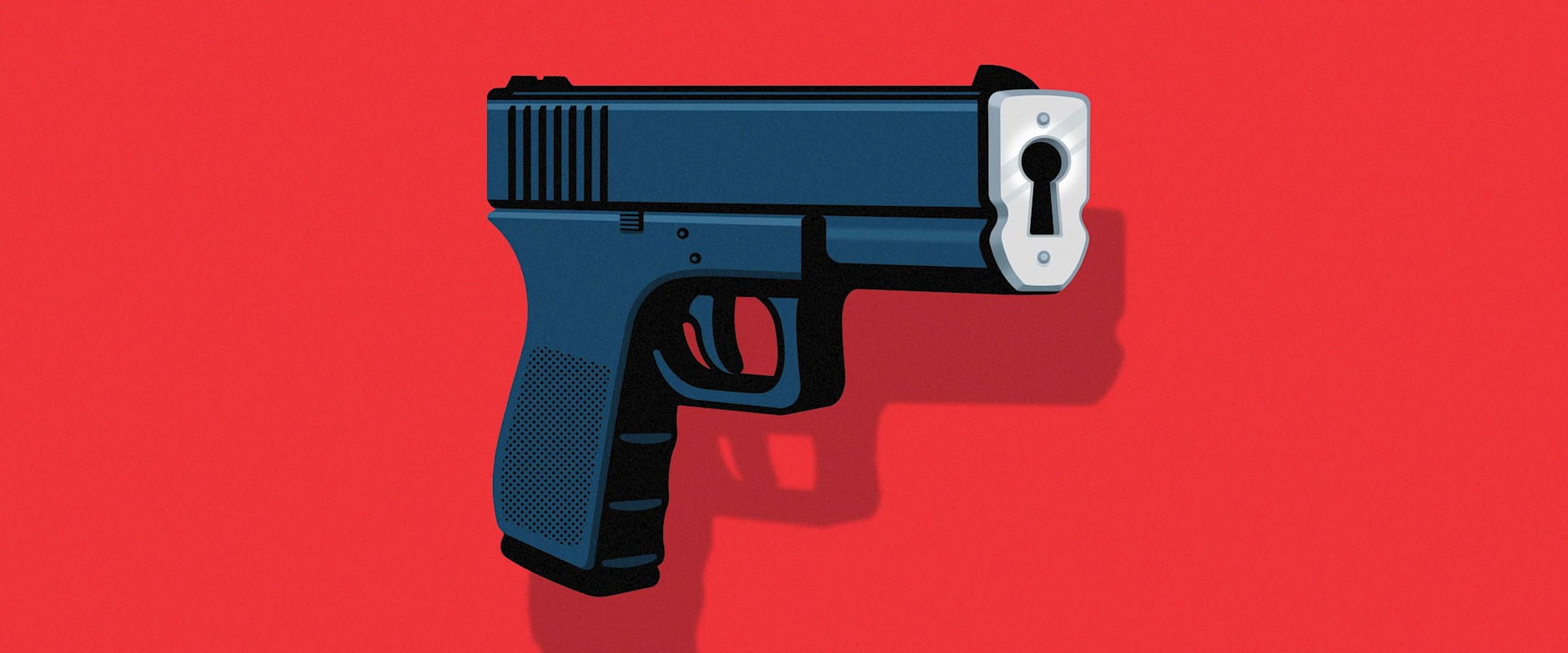Whenever a mass shooting in America is shocking enough to take over the headlines, calls go up to bring back the ban on assault weapons, a loose category that generally includes semiautomatic rifles and shotguns. But would that reduce the overall number of guns in circulation, given that around a third of US households surveyed in 2021 reported having a gun in the home?
Probably not, according to research by University of California at Berkeley’s Sarah Moshary, Chicago Booth’s Bradley Shapiro, and Booth research professional Sara Drango. Using a survey of 22,500 Americans, including 4,000 gun owners and buyers, the researchers constructed an analytical framework for evaluating firearms policy options. They find that customer substitution would blunt the intended effects of many popular regulations. In particular, the proposed “assault-weapons ban” would induce gun enthusiasts to buy more handguns instead, a category of weapon that is statistically more likely to be involved in crime.
Restricting handgun access would be hugely challenging—like any form of gun control—in the face of the ferocious promotion of the Second Amendment right to bear arms. More than 40 percent of American households own at least one gun, and over 5 percent have 10 firearms or more, the researchers find. At the same time, the United States has some 45,000 firearms-related fatalities every year. The researchers’ results confirm that restricting access would be difficult in part because customers prize their guns and despite the safety concerns, consider them to be worth far more than they paid for them.
The researchers worked with the Harris Poll, a global market-research and consulting firm, to conduct their study, using a quantitative marketing tool known as stated-choice-based conjoint analysis. They presented a series of questions on firearms, and manipulated prices and choices to assess how respondents would trade off different attributes.
There is no comprehensive federal database on gun sales and pricing, as the government is legally barred from collecting such information. Moshary, Shapiro, and Drango built their own database by scraping prices from galleryofguns.com, which provides information on gun costs and retail locations. Their data cover 520 zip codes.
In 2020, Americans bought 37 million guns, the researchers estimate. According to their model, 65 percent of gun purchases were handguns, which comprise one of the two main categories of firearms, the other being long guns. Handguns, which users can shoot using only their hands, generally include semiautomatic pistols and revolvers. Long guns, which are fired from the shoulder, include rifles and shotguns.
The researchers use the phrase “assault weapons” to describe all semiautomatic rifles and shotguns, recognizing that “the label obscures some nuance, as ‘assault weapon’ is not really a defined category of firearm, per se. Features such as the length of the barrel and the size of the stock are often invoked in laws concerning ‘assault weapons,’ and some handguns can fall into this category, as well.”
Gun regulation is harder than it sounds
The intended impacts of commonly proposed firearm regulations may be considerably moderated by consumers substituting one type of gun for another. For example, research finds that a ban on assault weapons would increase demand for handguns.
Prices for guns vary considerably, Shapiro notes. It’s possible to buy a semiautomatic pistol for just $300, or to spend upwards of $1 million on an antique revolver. The analysis indicates that revolvers cost $819 in the US on average; semiautomatic pistols, $596; and rifles, $821—and that many gun buyers would gladly pay more.
Running a 10 percent federal tax on all gun sales through their model, Moshary, Shapiro, and Drango find that it would have only a marginal effect on purchases. Such a tax would have about the same impact on total gun sales as an assault-weapons ban—the main difference being that the tax would mostly remove handguns from first-time gun buyers, whereas banning assault weapons would predominantly affect people who already own guns.
However, if the price of assault weapons were to rise significantly relative to handguns, gun buyers would switch to the latter, the researchers find. Consequently, the study suggests, bringing back the 1994–2004 ban on assault weapons would most likely just steer more purchasers to handguns and wouldn’t reduce the number of guns in circulation.
On the other hand, Moshary, Shapiro, and Drango’s model predicts that if the cost of handguns became prohibitive or if sales were more tightly restricted, gun purchasers wouldn’t switch to assault weapons and would in fact be more likely not to buy at all. This may be because consumers who prefer handguns generally find no appeal in owning long guns, the researchers suggest. First-time gun buyers also tend to be most interested in handguns, which are far more popular today than they were 20 years ago.
In 2020, handguns accounted for 60 percent of background checks in the US. That year, 54 percent of gun deaths were suicides—overwhelmingly involving handguns. Such weapons were involved in 91 percent of murders and manslaughters, according to records that specified the type of gun used to commit these crimes, the researchers write, citing Pew Research. Moreover, 80 percent of mass shootings involved at least one handgun, and 60 percent involved only handguns, according to the advocacy organization Everytown for Gun Safety.
The researchers don’t advocate any specific policies, and they observe that a handgun ban would be particularly difficult to achieve politically. It would affect a larger number of people than an assault-weapons ban. In any event, using predictive analysis, such as they do in their study, could help drive the discussion away from what works in political speeches and toward what could actually be effective in reality, they write.
Sarah Moshary, Bradley Shapiro, and Sara Drango, “Preferences for Firearms and Their Implications for Regulation,” Working paper, August 2022.
Your Privacy
We want to demonstrate our commitment to your privacy. Please review Chicago Booth's privacy notice, which provides information explaining how and why we collect particular information when you visit our website.
